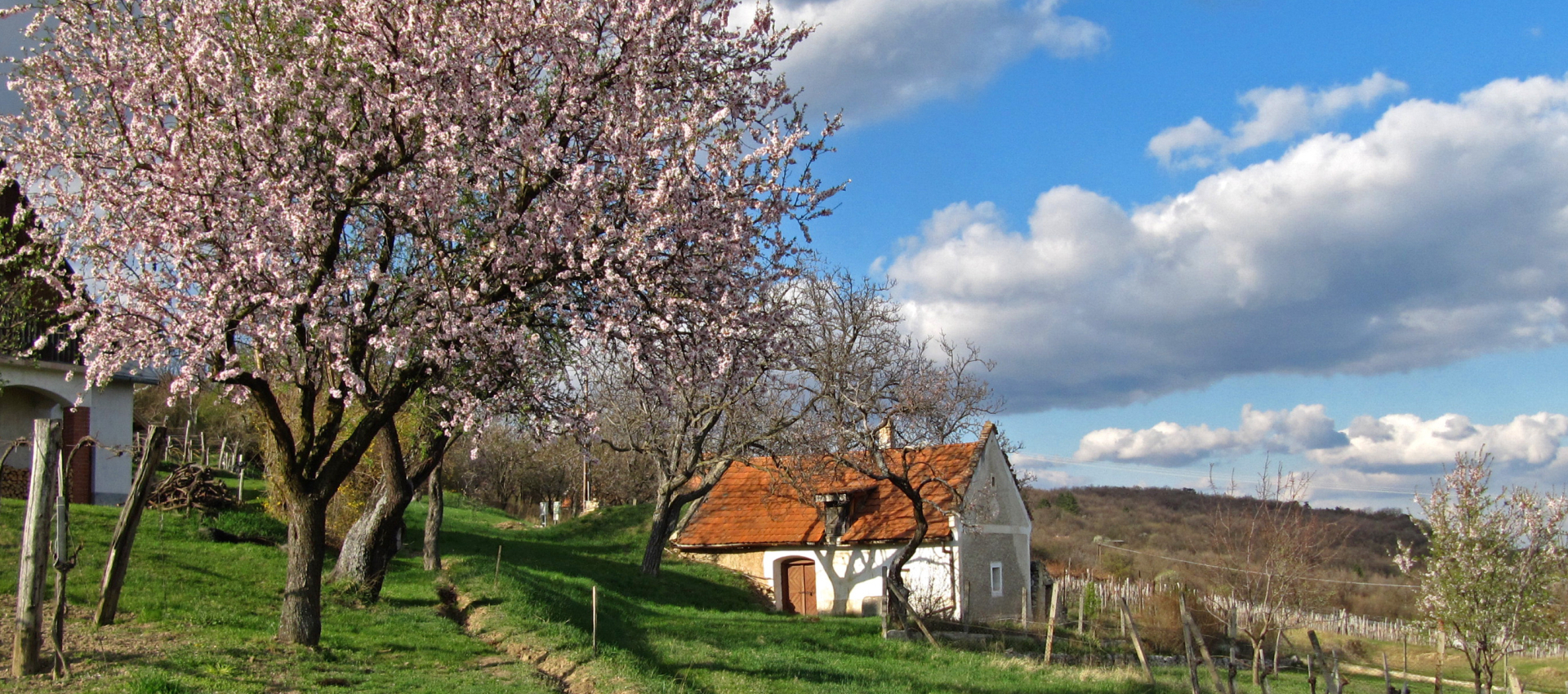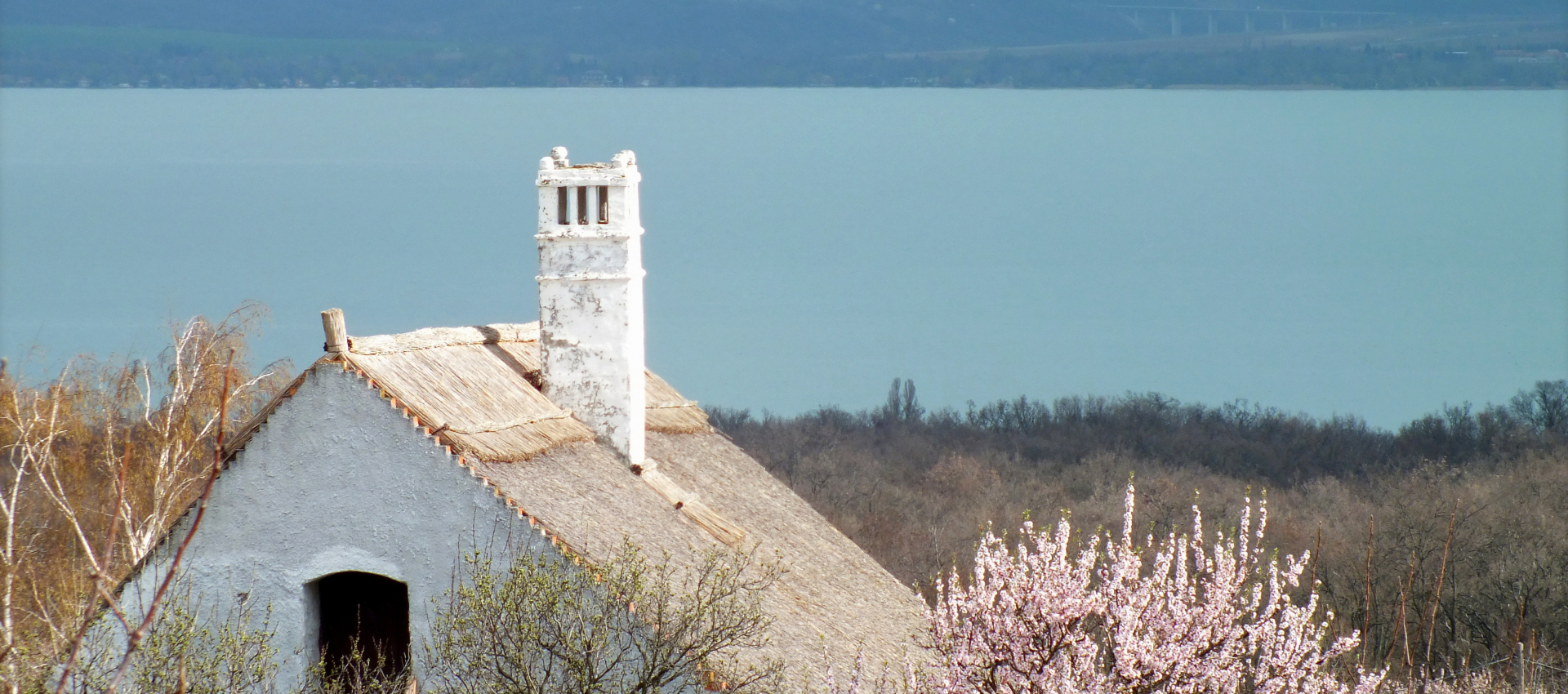
A római katolikus templom belülről.

Szent Erzsébet.
Evangélikus vagy római katolikus? Első ránézésre talán nehéz eldönteni, hogy a két templom közül mégis melyik-melyik, de segítünk: a katolikus őrzi középkori eredetű kelet-nyugati irányú tájolását. Az Árpád-kori előd romjain újjáépült templom a már korábban is emlegetett helyi birtokos Magyar Kegyes Tanítórend, azaz a piaristák jóvoltából 1827-re nyerte el mai formáját. A mindennek emléket állító latin nyelvű emléktáblát a karzat mellvédjébe építették. De másért is érdemes oda besurranni! Bensőséges az az élmény, melyet egy-egy apró, félhomályos falusi templom meglátogatása jelent, főként akkor, ha a kintről beszűrődő fény olyan színes ólomüvegablakokon árad be, mint amilyenek nálunk, a római katolikus templomban láthatók.
Amilyen meghitt a hangulata ezeknek az első ránézésre sokkal „régebbinek tűnő”, már-már historizáló hatást keltő ablakoknak, olyan „profán” a történetük.
Profán, ám egyúttal nagyon is különös, hiszen hátterében egy, a maga korában csillagászatinak számító lottónyeremény áll: 1971-ben ugyanis az Akalihoz tartozó Ságpusztán Slemmer Ferenc lottóötöse révén több, mint kétmillió forinttal lett gazdagabb, melyből nem csak az összes pusztán lakó családot támogatta, hanem Sallai László akali plébános javaslatára a község római katolikus temploma számára húszezer forint értékben négy darab ólomüvegablak gyártását finanszírozta.
A munkával Mohay Attila Budafokon élő üvegfestő iparművészt bízták meg, aki a templom búcsújára, Szent Kereszt felmagasztalásának ünnepére készítette el az alkotásokat.
A környék népi építészetének jellemzője, hogy „kommunikál" a helyi szakrális építészettel, az egymásra gyakorolt hatás következtében egyes elemek mind a két területen megfigyelhetők. Említhetjük a katolikus templom kórusának tornácokat idéző oszlopkiképzését, vagy azokat a külső-belső copf stílusú vakolatdíszeket, melyek több présházon is megjelennek. A figyelmes szemlélő a templomok ajtajának párhuzamait is felfedezheti, jobbára szőlőbeli hajlékok épületein.
Településünk lakossága a 19. század közepéig döntően evangélikus vallású volt – ennek miértjére a következő állomáshelyünkön adunk választ –, a piaristák azonban előnyben részesítették a katolikus munkaerőt, így szép lassan a falu római katolikus többségűvé változott. Máskülönben a kegyes tanítórend a vallásbéke jegyében igazgatta a települést, hiszen ők is támogatták az evangélikus templom 1890-es felépítését.
Amilyen meghitt a hangulata ezeknek az első ránézésre sokkal „régebbinek tűnő”, már-már historizáló hatást keltő ablakoknak, olyan „profán” a történetük.
Profán, ám egyúttal nagyon is különös, hiszen hátterében egy, a maga korában csillagászatinak számító lottónyeremény áll: 1971-ben ugyanis az Akalihoz tartozó Ságpusztán Slemmer Ferenc lottóötöse révén több, mint kétmillió forinttal lett gazdagabb, melyből nem csak az összes pusztán lakó családot támogatta, hanem Sallai László akali plébános javaslatára a község római katolikus temploma számára húszezer forint értékben négy darab ólomüvegablak gyártását finanszírozta.
A munkával Mohay Attila Budafokon élő üvegfestő iparművészt bízták meg, aki a templom búcsújára, Szent Kereszt felmagasztalásának ünnepére készítette el az alkotásokat.
A környék népi építészetének jellemzője, hogy „kommunikál" a helyi szakrális építészettel, az egymásra gyakorolt hatás következtében egyes elemek mind a két területen megfigyelhetők. Említhetjük a katolikus templom kórusának tornácokat idéző oszlopkiképzését, vagy azokat a külső-belső copf stílusú vakolatdíszeket, melyek több présházon is megjelennek. A figyelmes szemlélő a templomok ajtajának párhuzamait is felfedezheti, jobbára szőlőbeli hajlékok épületein.
Településünk lakossága a 19. század közepéig döntően evangélikus vallású volt – ennek miértjére a következő állomáshelyünkön adunk választ –, a piaristák azonban előnyben részesítették a katolikus munkaerőt, így szép lassan a falu római katolikus többségűvé változott. Máskülönben a kegyes tanítórend a vallásbéke jegyében igazgatta a települést, hiszen ők is támogatták az evangélikus templom 1890-es felépítését.
8. In peace side by side


Lutheran or Roman Catholic?
At first glance, it may be difficult to differentiate between the two churches, but we will help: the Catholic Church preserves its east-west orientation, originating in medieval times.
The church, rebuilt on the Árpádian Church era ruins, gained its present form by 1827 thanks to the previously mentioned local Piarists. A Latin plaque commemorating all of this was built into the parapet of the porch.
But, it's worth sneaking in for other things as well?!
The experience of visiting a small, dimly lit village church is intimate, especially when the light from outside comes in through stained-glass windows, like the one in the Roman Catholic church.
As intimate as these older-looking windows seem at the first glance, they have a “profane” story.
Profane, but at the same time very special, as it is based on a lottery prize that was considered astronomical in its day. There was a man from Ságpuszta, which belongs to Akali, called Ferenc Slemmer. He won the lottery, and from its prize, he supported families of Ságpuszta. At the proposal of the parish priest, he financed the production of four stained glass windows in the church.
The work was entrusted to Attila Mohay, a glass painter living in Budafok, who created the works for the renovation of the church and the celebration of the exaltation of the Holy Cross.
The folk architecture of the area is characterized by the fact that it "communicates" with the local sacred architecture, and due to this interaction, some elements can be observed in both areas.
We can mention the column design of the choir of the Catholic church, which inspired the porches, or the exterior-interior Louis Seize style plaster decorations that appear on multiple wine press houses. The attentive observer can also discover similarities in the doors of the churches, mostly in the buildings of the vineyards.
The population of our settlement was predominantly Lutheran until the middle of the 19th century - we will explain why at our next stop. However, the Piarists preferred the Catholic labor force, so slowly the village became a Roman Catholic majority.
As they also supported the construction of the Lutheran church in 1890, the Piarists ruled the settlement in the name of religious peace.
At first glance, it may be difficult to differentiate between the two churches, but we will help: the Catholic Church preserves its east-west orientation, originating in medieval times.
The church, rebuilt on the Árpádian Church era ruins, gained its present form by 1827 thanks to the previously mentioned local Piarists. A Latin plaque commemorating all of this was built into the parapet of the porch.
But, it's worth sneaking in for other things as well?!
The experience of visiting a small, dimly lit village church is intimate, especially when the light from outside comes in through stained-glass windows, like the one in the Roman Catholic church.
As intimate as these older-looking windows seem at the first glance, they have a “profane” story.
Profane, but at the same time very special, as it is based on a lottery prize that was considered astronomical in its day. There was a man from Ságpuszta, which belongs to Akali, called Ferenc Slemmer. He won the lottery, and from its prize, he supported families of Ságpuszta. At the proposal of the parish priest, he financed the production of four stained glass windows in the church.
The work was entrusted to Attila Mohay, a glass painter living in Budafok, who created the works for the renovation of the church and the celebration of the exaltation of the Holy Cross.
The folk architecture of the area is characterized by the fact that it "communicates" with the local sacred architecture, and due to this interaction, some elements can be observed in both areas.
We can mention the column design of the choir of the Catholic church, which inspired the porches, or the exterior-interior Louis Seize style plaster decorations that appear on multiple wine press houses. The attentive observer can also discover similarities in the doors of the churches, mostly in the buildings of the vineyards.
The population of our settlement was predominantly Lutheran until the middle of the 19th century - we will explain why at our next stop. However, the Piarists preferred the Catholic labor force, so slowly the village became a Roman Catholic majority.
As they also supported the construction of the Lutheran church in 1890, the Piarists ruled the settlement in the name of religious peace.








